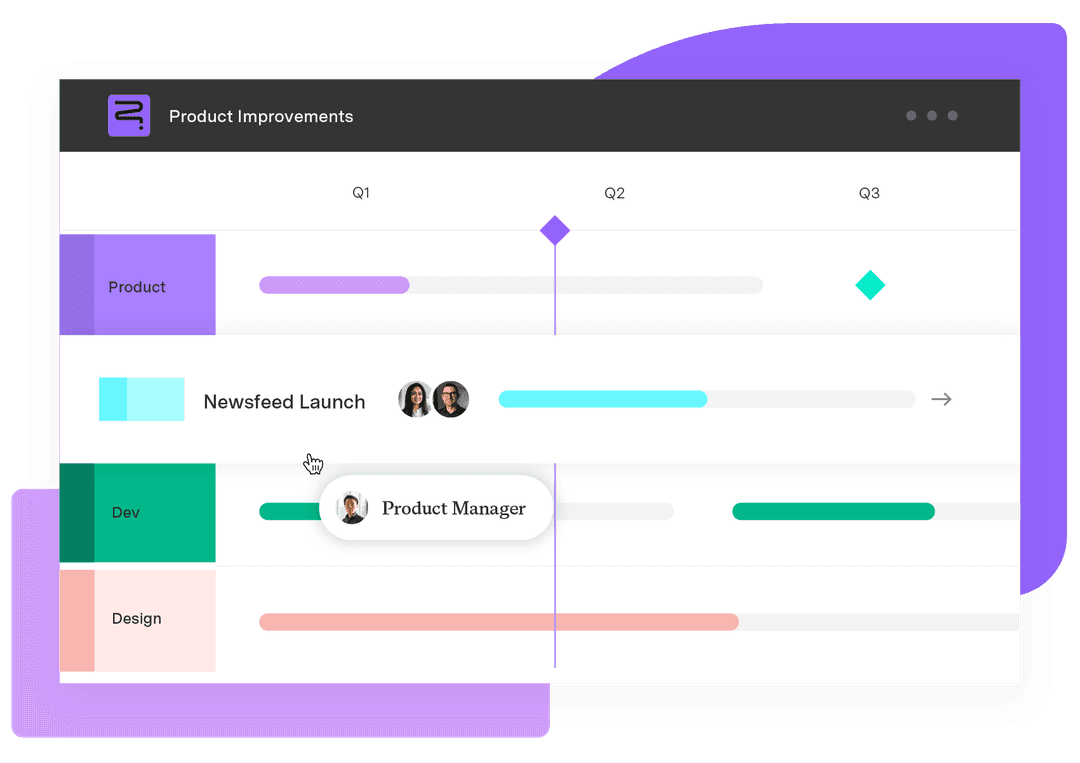8 agile templates to streamline project management tasks
Tempo Team
Interested in building efficiency into your agile project management practice? Consider adding a well-known productivity hack to your process – templates.
Agile templates help project and product managers standardize everyday tasks like roadmapping, sprint planning, and strategy development to increase their effectiveness and boost their daily output rate.
Templates provide structure and consistency to routine workflows and contribute to improved communication and collaboration among agile teams. Here’s everything you need to know about template integrations into Agile at Scale processes, including roadmap creation.
Using agile roadmap templates
Agile roadmaps are pivotal to project planning, making roadmap templates a sought-after tool for boosting productivity. Agile roadmaps help team members visualize product or software development over time.
Unlike roadmaps used in waterfall project management methodology, which track dates and deadlines, agile roadmaps focus on development themes and progress. Without hard and fast deadlines, these documents are dynamic and open to adaptation, embodying the agile principle of iterative change. Should business conditions shift, the roadmap can adjust.
In addition to flexibility, agile roadmaps provide the following advantages to project managers, team members, and stakeholders:
Big-picture insight into project or product development
Info and context to help prioritize routine tasks and timelines
Clarity regarding the project or product’s value to the company and end-user
Long-term strategy visualization
When to use an agile roadmap
Agile roadmaps allow users to adjust their structure to suit various development scenarios.
Thematic structure: Structuring your roadmap around themes allows users to emphasize outcomes rather than timelines.
Fuzzy time structure: Not every initiative has a firm timeline for delivery. A fuzzy time template allows teams to chart development progress using loose time buckets.
Sprint roadmap: The sprint roadmap enables agile scrums to create short-term plans, ensuring tasks and story points stay on the radar.
Agile-ish roadmap: Project managers can use an agile-ish roadmap template to produce rough deadlines if the agile team can’t establish a firm timeline in response to stakeholder demands.
Benefits of agile templates
Incorporating agile project management templates into your process comes with many advantages.
Standardization
Standardizing project documentation helps your teammates understand assignments and requirements across multiple projects.
Drives value
Templates improve efficiency and productivity in two ways. First, they use predefined structures for manual work, building task memory and creating routines to make them less labor-intensive. Second, some templates include automation to streamline workflows and manage day-to-day administrative tasks.
As a result, the team has more resources to dedicate to high-value activities.
Flexibility
Agile practices and principles impart templates with inherent flexibility. Easily customizable, they can accommodate a project’s specific needs, changing requirements, and methodology updates.
Incremental improvement
Per agile methodology, each template includes space to record lessons learned. Retrospectives foster a culture of continuous improvement, enhancing processes and productivity with every iteration.
Visibility
Online project templates use real-time data to provide visibility into team progress. Accurate information allows project managers to track tasks to completion and pinpoint potential roadblocks or threats to the deadline. This foresight allows project managers to address potential delays before they impact timelines.
Teamwork
Agile templates encourage team members to share, track, and discuss tasks and activities, leveraging the group’s power to solve problems and hold each other accountable.
Ease of use
Many templates – including Tempo’s – get development teams up and running much faster. They facilitate project planning and other tasks by allowing users to import data from different applications with a drag-and-drop editor.
Best agile templates for different use cases
No matter your challenge or project management methodology, there’s an agile template to help you succeed. Here are our top eight additions to your project management toolbox:
1. Visualizing project goals: Agile roadmap template
Agile templates for project or product roadmaps illustrate the big picture by providing insight into strategic goals, milestones, and release plans. Stakeholders appreciate the roadmap’s visual nature, which improves communication and alignment.
The roadmap is also dynamic, supporting the agile approach to planning and execution. It ensures flexibility and adaptability under evolving conditions.
2. Facilitating collaboration: Agile project plan template
A project plan template is a communication tool that encourages collaboration among team members and stakeholders through transparency and alignment. It offers a standardized framework for planning, tracking, and managing change, facilitating the successful execution of an agile project.
3. Tracking progress: Kanban board template
Kanban boards are a project management tool that visualizes agile workflows and tracks tasks to completion across various development stages.
A Kanban template provides a predefined framework to optimize agile processes. By controlling the addition of jobs into the development pipeline and limiting work-in-progress, the team can commit adequate time and resources to deliver the highest-priority backlog items.
4. Managing sprints: Agile sprint backlog template
The sprint backlog template helps scrum teams organize tasks for upcoming iterations. Working with the Scrum master, members organize, prioritize, and monitor progress on action items and user stories selected from the project or product backlog.
5. Scheduling: Gantt chart template
A Gantt chart template is a visual representation of the project schedule. Tasks, milestones, and dependencies are mapped to the timeline, allowing project managers to plan activities, track dependencies, and communicate the project schedule to the agile team and stakeholders.
6. Prioritization: Product backlog template
Successful product development requires leadership to know which task to work on and when. The backlog template allows product managers and teams to organize, prioritize, and manage feature lists in response to market demands, developing updates and new functionality that produce the most customer value.
7. Strategic planning: Product strategy template
This template structures decision-making, alignment, and communication. The product strategy template advances conversations about development and execution tactics among team members and stakeholders, getting everyone on the same page.
8. Coordination: Product development template
Product development templates offer enhanced visibility and communication to help agile project managers organize cross-functional teams. The structure outlines straightforward, replicable steps that simplify product development, producing consistent results and outcomes.
Maximize efficiency with agile template best practices
The following best practices will help you fully integrate templates into your agile project management methodology:
Assign ownership: Track task assignees and progress to monitor workloads and avoid overwhelming team members.
Use fuzzy time: Accurately scheduling granular timelines is challenging. Instead, organize project tasks into broad time buckets.
Create custom data sets: Instead of creating a new visualization, use pivot and filter features to tailor existing roadmap templates to audience needs.
Follow agile principles: Review the 12 agile principles and ensure templates help your team satisfy each requirement.
Tailor your templates: Personalize templates with custom color palettes and graphics to facilitate visualization and help information stand out.
Keep it simple: Templates are supposed to save time for project managers, so avoid overcomplicating them with unnecessary details.
Be flexible: Don’t hesitate to adapt a template’s configuration to suit your agile team’s needs. Their design focuses on flexibility in the face of changing requirements, methodologies, and conditions.
Gather feedback: Agile project management is all about continuous improvement. This philosophy applies to tools as much as methodology. During project retrospectives, talk to team members and stakeholders about how to improve templates for the next iteration.
Supercharge agile projects with Tempo
Tempo’s agile roadmap templates streamline workflows and improve agile team productivity. Our templates are built into the Strategic Roadmaps application so you can create board-room-ready presentations in minutes to outline project or product development plans, strategies, and milestones.
Get started today with Strategic Roadmaps and take your project planning to the next level.













































